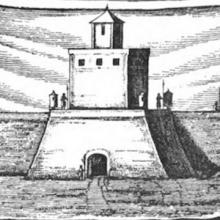Slavery

Excerpt from The History of Mary Prince
“The History of Mary Prince, A West Indian Slave Related by Herself” is first-person account was written by British abolitionists and disseminated through the London Society for the Abolition of Slavery in 1831.
Liberian Letters
Liberian Letters will fascinate teachers and students interested in the late history of slavery, manumission, and repatriation of people of African descent to Sub-Saharan coasts.
Long Teaching Module: Women in the British Empire, 1800-2000
This module will help students explore the importance of women—both British women and women from British colonies—to the British Empire, as well as their importance in developing an understanding of Britain as an imperial power to a domestic audience at home.

Long Teaching Module: Cultural Contact in Southern Africa
The Portuguese explorer Bartholomew Diaz first saw the Cape of Good Hope—the southernmost point in Africa—in 1488. No attempt was made by a European nation to establish a permanent settlement there, however, until 1652, when the Dutch East India Company (VOC) set up a refreshment station.

Internet African History Sourcebook
The site provides broad chronological and geographic coverage, with a particularly impressive list of sources for ancient Egypt and Greek and Roman Africa. It is a gateway to an abundance of information.
Renunciation case against Gertrudis de Escobar, Mexico, 1659
This document is the proceedings of an 1659 Inquisition case brought against a 14 year old girl. The girl, named Gertrudis de Escobar, was accused of the crime of renouncing God. Gertrudis de Escobar was the child of a black person and a white person, termed at that time a mulata.

Long Teaching Module: Children in the Slave Trade
From the 16th to the 18th centuries, an estimated 12 million Africans crossed the Atlantic to the Americas in the trans-Atlantic slave trade. Used on plantations throughout the United States, Latin America and the Caribbean, enslaved Africans were shipped largely from West Africa.

Internet Medieval Sourcebook
The great advantage of this site is that primary sources have been assembled and categorized by a trained medievalist and active teacher, so that they are appropriate for a wide range of introductory history courses.
Short Teaching Module: Childhood and Transatlantic Slavery
Especially useful in helping to place slavery in a world history perspective is one of the first slave narratives, The Interesting Narrative of the Life of Olaudah Equiano or Gustavus Vassa the African, originally published in 1772.
British Empire: Travel Narrative, Mary Kingsley
Mary Kingsley (1862-1900) is one of the best known British women to have visited West Africa during the period historians call the Age of New Imperialism. Her early life gave no indication of her future renown.